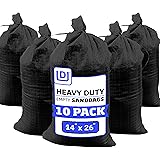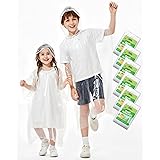Boiling Water
The Basics of Boiling
When it comes to purifying water, boiling is like the old-school classic method, right? I mean, it’s simple but super effective! The idea is that you heat the water until it reaches a rolling boil. This process kills off most pathogens – bacteria, viruses, and parasites – you name it! It’s the safest method you can have up your sleeve. Just be sure to let it boil for at least a minute or two.
Now, if you’re at high altitudes, it’s a good idea to extend that boiling time a bit longer. Why? Because water boils at lower temperatures up there, so you want to be extra sure that nasty stuff doesn’t survive. Add a couple more minutes, just to be on the safe side!
Also, after boiling, let it cool down naturally. This will help settle any leftover minerals and particles. When it’s cool enough, you’ll be left with nice, clear water that you can drink. It’s a win-win situation, my friends!
Filtration Using Sand and Gravel
Understanding the Filtration Process
I’ve got to tell you about this natural filter trick I stumbled upon one day. It’s a bit like how rivers filter water over thousands of years with layers of sand and gravel. You can set up your own filtration system using layers of sand, gravel, and charcoal. I usually start with a clean container.
First, pour a layer of gravel at the bottom – it’s like the foundation. Then, add some charcoal which is excellent at trapping impurities. After that, finish up with a layer of fine sand on top. This is your filtration device, and trust me, it works like magic! Just pour the dirty water in, and watch it ooze through the layers. It might take a bit of time, but it’s totally worth the wait.
Keep in mind that this kind of filter won’t remove everything, but it’s a solid first step in cleaning up water, especially when you’re out in nature. Always follow it up with boiling for best results. Think of it as a two-part cleaning process!
Solar Water Disinfection
Utilizing Sunlight
Have you ever heard of using sunshine to purify water? It’s a thing, and one of my favorite methods. All you need is a clear container filled with water, and if you can, make sure the water is as clear as possible to start with. Place your container in direct sunlight for at least six hours. I’m talking about a hot, sunny day – the more sunlight, the better!
This method works because UV rays from the sun can kill off harmful pathogens. It’s not just effective; it’s also kinda laid-back and eco-friendly! I’ve used it on camping trips when I wanted to take it easy without boiling. Just throw it out in the sun and relax.
== > What if ... Get a FREE Subscription to PREPARE
However, there’s a catch: this method won’t remove chemicals or heavy metals. So if you expect contaminants like that, it’s best to use solar disinfection alongside other methods. Think of this as a chill way to further clean your water.
Using Natural Coagulants
Common Coagulating Agents
So, you know how dirt can make water all murky? Well, natural coagulants can help settle those impurities. One I’ve tried is moringa seeds, which are pretty easy to find. Just crush the seeds and mix them in your water. The cool part is that they work to clump dirt and other particles together, making them easier to filter out.
Get Preparedness and Self-Reliance Tips. Subscribe Now!
There’s also something called bentonite clay that I once used. It’s a bit like magic when mixed into dirty water – it grabs hold of the bad guys and lets you filter them out. You just add a little, stir it up, and let it sit for a while. After that, you can filter or pour off the clearer water. It’s like cleaning out your closet, but for drinking water!
Keep in mind that while coagulants help clear up the murkiness, you still need to follow up with boiling to handle those sneaky microbes. It’s a great strategy to maximize your water purification game!
Activated Charcoal
Active Ingredient for Purification
Activated charcoal has become my go-to when I’m looking to purify water naturally. It’s not just a fad from health stores; it’s a solid purifier! What’s awesome about it is its porous structure, which allows it to absorb contaminants, including odors and flavors from water. You can buy it in bulk or make your own if you’re feeling crafty!
To use, just take activated charcoal and mix it with your water. I usually give it a good stir and let it sit for a bit. After about an hour, you can pour the water through a cloth or a coffee filter to separate the charcoal from your hopefully cleaner water. This method is particularly awesome for improving taste and smell.
Like many methods, keep in mind that while activated charcoal is great for filtering, you still want to follow up by boiling to ensure those pathogens are taken care of. Combining techniques is the best way to have peace of mind when quenching your thirst!
FAQs
1. Can I drink water directly after boiling?
Absolutely! After boiling, the water is generally safe to drink, especially if you let it cool and settle. Just make sure it’s boiled for at least a minute!
2. How long does the filtration method take?
Depending on the method and how dirty the water is, it could take anywhere from a few minutes to several hours. Just be patient and let the filter do its work.
3. Is solar disinfection effective on cloudy days?
It’s less effective on cloudy days, but you can still try it; it just may need more time. Clear sunny days are ideal for this method.
4. Can I reuse activated charcoal for purification?
While activated charcoal can be reused a couple of times, it does lose its effectiveness. It’s best to replace it once you notice the taste or smell returning.
5. Are natural coagulants safe to use?
Yes, as long as you know what you’re using. Moringa seeds and bentonite clay are generally safe for water purification, but always do a bit of research before trying new materials!






